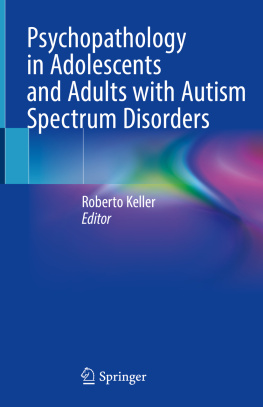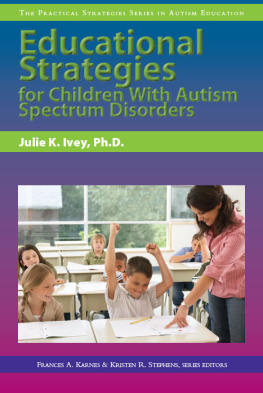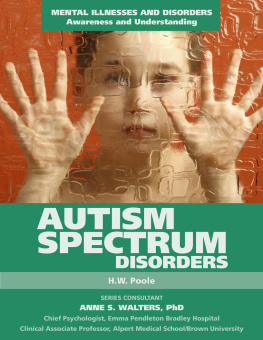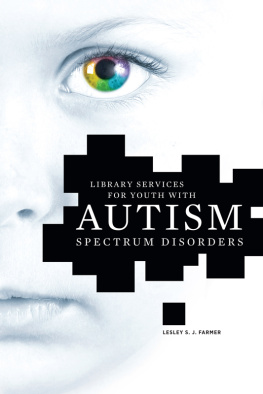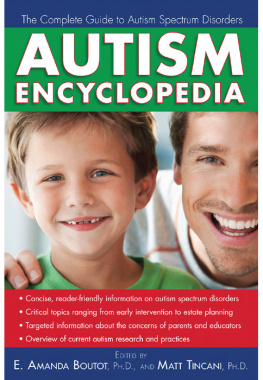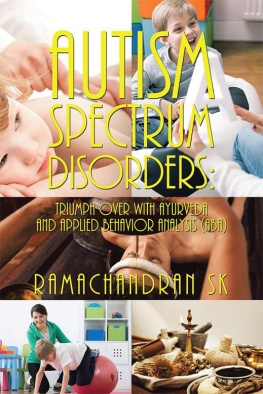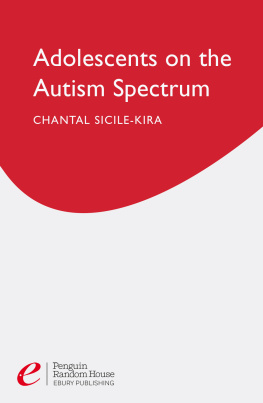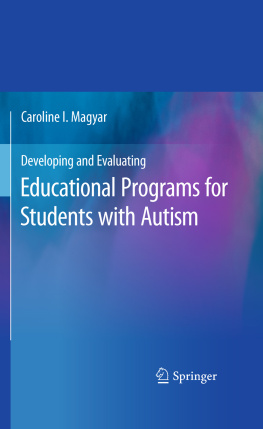Roberto Keller - Psychopathology in Adolescents and Adults with Autism Spectrum Disorders
Here you can read online Roberto Keller - Psychopathology in Adolescents and Adults with Autism Spectrum Disorders full text of the book (entire story) in english for free. Download pdf and epub, get meaning, cover and reviews about this ebook. year: 2019, publisher: Springer International Publishing, genre: Home and family. Description of the work, (preface) as well as reviews are available. Best literature library LitArk.com created for fans of good reading and offers a wide selection of genres:
Romance novel
Science fiction
Adventure
Detective
Science
History
Home and family
Prose
Art
Politics
Computer
Non-fiction
Religion
Business
Children
Humor
Choose a favorite category and find really read worthwhile books. Enjoy immersion in the world of imagination, feel the emotions of the characters or learn something new for yourself, make an fascinating discovery.
- Book:Psychopathology in Adolescents and Adults with Autism Spectrum Disorders
- Author:
- Publisher:Springer International Publishing
- Genre:
- Year:2019
- Rating:4 / 5
- Favourites:Add to favourites
- Your mark:
- 80
- 1
- 2
- 3
- 4
- 5
Psychopathology in Adolescents and Adults with Autism Spectrum Disorders: summary, description and annotation
We offer to read an annotation, description, summary or preface (depends on what the author of the book "Psychopathology in Adolescents and Adults with Autism Spectrum Disorders" wrote himself). If you haven't found the necessary information about the book — write in the comments, we will try to find it.
Roberto Keller: author's other books
Who wrote Psychopathology in Adolescents and Adults with Autism Spectrum Disorders? Find out the surname, the name of the author of the book and a list of all author's works by series.
Psychopathology in Adolescents and Adults with Autism Spectrum Disorders — read online for free the complete book (whole text) full work
Below is the text of the book, divided by pages. System saving the place of the last page read, allows you to conveniently read the book "Psychopathology in Adolescents and Adults with Autism Spectrum Disorders" online for free, without having to search again every time where you left off. Put a bookmark, and you can go to the page where you finished reading at any time.
Font size:
Interval:
Bookmark:
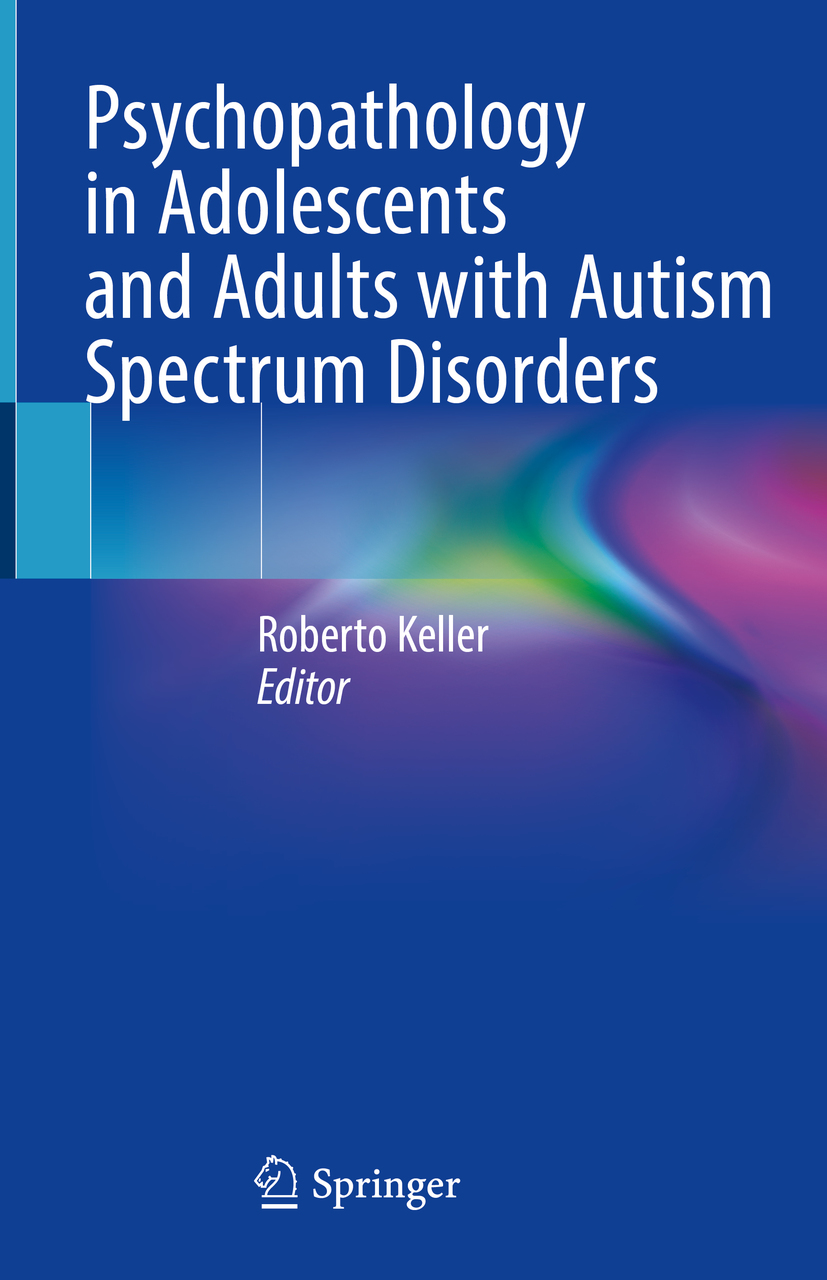

This Springer imprint is published by the registered company Springer Nature Switzerland AG
The registered company address is: Gewerbestrasse 11, 6330 Cham, Switzerland
This book is dedicated to persons with autism, to their families who everyday stay with them along the life path, and to professionals who seriously work to improve their quality of life.
Roberto Keller
Autism spectrum disorder is a neurodevelopmental disorder that needs a lifetime support. Unfortunately, adolescents and adults are often not correctly diagnosed and dont receive the correct treatment and/or support.
A major concern is related to psychopathological co-occurrence that may worse autism functioning and quality of life of people with autism.
Bullying and mobbing could be a trigger for psychopathological co-occurrence, but also genetic vulnerability must be considered.
Clinicians must detect psychopathological disorders, and this book could help them in their work, especially when, as in intellectual disabilities and autism, the clinical symptoms could be different from general population.
Autism spectrum disorder (ASD) is a neurodevelopmental disorder with a broad phenotype, based on a complex geneticepigenetic interaction. ASD diagnosis is highly stable over the lifetime and has a higher mortality rates, medical and psychiatric disorder comorbidity, and poorer overall outcome compared to general population [].
In accordance with the United Nations Convention on the Rights of Persons with Disabilities and the Charter for Persons with Autism (PWA) adopted by the European Parliament, a right to diagnostic clarification and treatment assistance applies across the entire autistic spectrum, including people with additional intellectual disability [].
In this text, even if we use medical words and a clinical approach, we know that the definition of person with autism (PWA) is the right one. Other Associations prefer the definition autistic person. Anyway, in this context, we are describing complex clinical situation and also severe form of autism with intellectual disability, epilepsy, language disorder, and psychiatric comorbidity, so medical terms are correctly allowed.
Use of international validated diagnostic criteria
Collecting clinical information from the family and the person with suspected ASD
Psychiatric and Neurological clinical examination
Test evaluation
Medical assessment
Define a personalized project of treatment
The diagnosis of ASD is clinically based on the course of neurodevelopment and the individuals current symptoms [].
Diagnostic criteria are defined in the current diagnostic manuals of the American Psychiatric Association (DSM) [].
ASD in DSM-5 [] is characterized byas first and core criterionpersistent deficits in social communication and social interaction across contexts, not accounted for by general developmental delays, and manifested by deficits in socialemotional reciprocity, in nonverbal communicative behaviors used for social interaction, and in developing and maintaining relationships.
The second criterion is the presence of restricted, repetitive patterns of behavior, interests, or activities, manifested by at least two of the following: (1) stereotyped or repetitive speech, motor movements, or use of objects; (2) excessive adherence to routines, ritualized patterns of verbal or nonverbal behavior, or excessive resistance to change; (3) highly restricted, fixated interests that are abnormal in intensity or focus; (4) hyper- or hypo-reactivity to sensory inputs or unusual interest in sensory aspects of environment. Symptoms must be present in early childhood (but may not become fully manifest until social demands exceed limited capacities, and together limit and impair everyday functioning).
The DSM-5 defines ASD as a unique cluster of disorders [].
Symptoms must be present in early childhood but may not become fully manifest until social demands exceed limited capacities (approximately age 8 and younger).
Font size:
Interval:
Bookmark:
Similar books «Psychopathology in Adolescents and Adults with Autism Spectrum Disorders»
Look at similar books to Psychopathology in Adolescents and Adults with Autism Spectrum Disorders. We have selected literature similar in name and meaning in the hope of providing readers with more options to find new, interesting, not yet read works.
Discussion, reviews of the book Psychopathology in Adolescents and Adults with Autism Spectrum Disorders and just readers' own opinions. Leave your comments, write what you think about the work, its meaning or the main characters. Specify what exactly you liked and what you didn't like, and why you think so.

